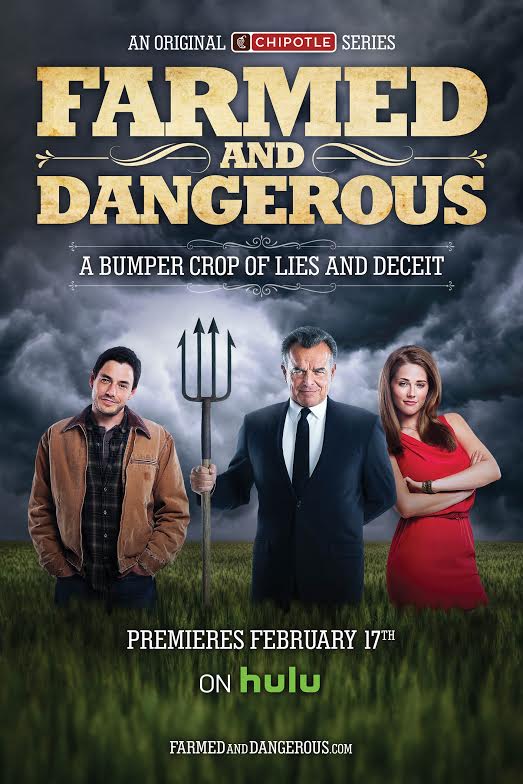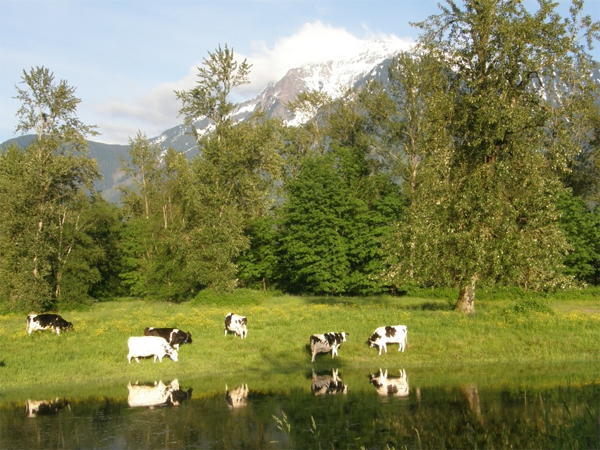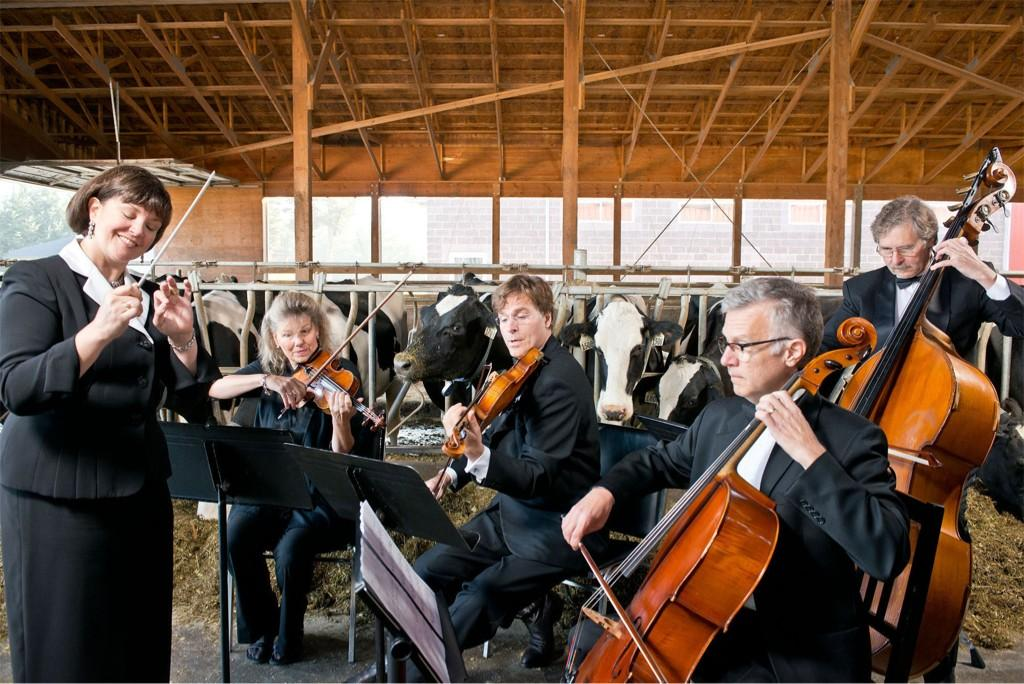On Friday, a new undercover video from the non-profit group Mercy for Animals Canada was released showing abuse of dairy cattle at Canada’s largest dairy farm, Chilliwack Cattle Sales. The video, shot by a former employee of the farm, shows dairy cows being whipped and beaten with chains and canes, as well as being punched and kicked. This totally unacceptable conduct is a black eye for everyone in the dairy industry around the world.
The video is horrific. To dairy farmers the video is heartbreaking. A large majority of the people who dairy farm have family run organizations and treat their animals as if they are part of the family. To see a dairy cow being treated in such a horrific manner is absolutely disgusting.
For their part, the Kooyman family has also expressed their concerns over the treatment of the cattle on their farm and they first suspended all employees involved, pending investigation, and have now fired them. (Read more: Kooyman family in shock after allegations of employee animal cruelty and Employees terminated, cameras to be installed following release of video) The challenge is that this should never have happened in the first place. In watching the video, it would seem that these are isolated cases. You see multiple employees abusing a cow at one time, even while knowing that they are being videotaped. This indicates that the employees were comfortable with their actions. It would seem to show that those actions were generally accepted on the farm. Even though you, as owner or manager, might never take part in such actions yourself, what happens on your farm and how your cows are treated there is your responsibility.
As very large dairy farms are becoming more common, it often means hiring help that have not come from a dairy cattle or animal handling background, especially when trying to hire works for the night shift on farms that milk three times a day, as may have been the case here. As a result, they have not been properly trained around dairy cattle and don`t understand animal behavior. Quite likely, up to the point of being hired, they have not been exposed to the art of dairy stockmanship. Recently we published an article about the lost art of dairy cattle stockmanship in response to growing concerns, which triggered our alarm bells. (Read more: The Lost Art of Dairy Cow Stockmanship. When Push Comes to Nudge.) With the now firing of the individuals involved, there is potential additional legal action that could be taken by these individuals against Chilliwack Cattle Sales, claiming that this is how they were trained and the generally accepted conduct at the farm, and so firing them for these actions is unfair.
It’s really about culture and engagement
Ben Loewith from Summitholm Holsteins, one of Canada’s top managed herds, comments on the situation with proactive advice. “Take this opportunity to discuss proper animal care with everyone on the farm. Create a culture where improper handling is reported to you.” Having been on Summitholm’s Lynden Ontario farm numerous times, I can attest to the fact that, at Summitholm, every cow is treated with the utmost respect and care. This practice is a synchronization of the exceptional animal husbandry and people management of the Loewith family that is a priority of their personal management style. They know that a comfortable cow is the most profitable kind of cow there is. I have been told by employees at Summitholm, of which some have been there over 20 years, that “If you yell at a cow, let alone kick or hit a cow, you might as well start looking for new employment.”
The handling of this issue reminds me of a quote from Richard Branson, founder of Virgin Enterprises and sixth richest citizen in the UK, where he said, “The way you treat your employees is the way they will treat your customers.” Well, for me, the same is true on a dairy farm. The way you treat your employees is the way they will treat your cows. Properly trained and respectfully treated employees follow the rules. They know they are doing a good job, are less stressed, and use their energy toward being more productive. (Read more: 80 Ways to Build a Dairy Dream Team – Employees are what make dairy farms successful today)
The following are some key benefits of properly training and treating your employees:
- Less risk
A well-trained and managed employee is less likely to administer a wrong product or treat an animal incorrectly. One mistake from an untrained or unhappy employee could cost you financially and personally. Why risk your company’s reputation? - Consistency
Happy well-trained employees are consistent employees. When you have a good training program, you’ll have a much more dependable output regardless of employee pre-dairy experience. You’ll see more consistent compliance with protocols, and workers will understand why following these protocols are necessary. When employees follow protocols, production increases. - Better company culture
While some may think that “corporate culture” is not relevant on a dairy farm, they could not be more wrong. Workers cannot know if they are doing a good job if they do not clearly understand what the job requires. Lack of training creates stress and a culture of disengaged employees, which can also lead to higher turnover. Proper training and treatment help communicate the value of employees’ roles, which drives engagement and motivation for employees to put forth extra effort from the beginning. - Increased profitability
Having fully developed and engaged employees will allow you, the owner or manager, to focus on strategic goals. You’ll have confidence that employees know how to operate efficiently. In addition, they too will have confidence, which further contributes to increased efficiency. Knowing the proper protocols means that no one has to wait on owners or managers for instructions or approval.
Social Outrage
Dairy farmers from across the country took to social media to share their outrage towards the culprits who were caught abusing dairy cows. Many also tried to counter the negative press by sharing pictures and tweets about how animals are cared for on their farms. Times like these are exactly why we need more dairy farmers involved in initiatives like proAction. The proAction Initiative is a way of showing our customers and consumers that we have improved the management of our farms over time. That we take responsibility for our on farm food safety, quality of milk, care of our animals, and care of the environment. We are doing things to enhance biosecurity to limit or prevent diseases from coming onto our farms. It’s going to be a way of not only telling our consumers that we are doing a good job but we will have a way of measuring and proving that claim. It will be a way of defending our best practices that we are implementing on our farms. Showing is better than just telling all the great things we as Canadian dairy farmers are doing in the area of sustainability. (Read more: TOM HOOGENDOORN- Family man, Farmer & Our Face to the Consumer!) Michele Pay-Knoper, an agriculture agvocate points out that “We have a tendency to be modest, stubborn and independent – and extraordinarily busy milking cows, putting up hay and taking care of business. However, telling your story is a business practice today”. (Read more: Michele Payn-Knoper – Standing Up and Speaking Out for Agriculture)
It’s times like these that we need to share messages and videos like the one Dairy Carrie – Carrie Mess – produced entitled “Undercover Dairy Farm Video”. While the title might have you expecting to see something similar to that of the Mercy for Animals Canada at Chilliwack Cattle Sales, instead what you see is what really goes on behind the doors of a dairy farm which is calm comfortable dairy cows, eating and producing high quality milk. (Read more: Dairy Carrie – Diary of a City Kid Gone Country)
The Bullvine Bottom Line
As dairy farms grow larger, it is important that the quality of stockmanship does not decline. It is important to take the time to train your employees on what high quality stockmanship involves. Training and upgrading of animal handling skills is an ongoing priority. The challenge is that everyone on the dairy operation must recognize the importance of proper treatment and care of the herd. Ideally, the monitoring is everyone’s role. There can never be an “I didn’t know!” excuse. Ultimately, whether you have 10 or 10,000 cows, you are responsible for the proper care and treatment of your cattle.
For more an proper care and handling of farm animals check out The Code of Practice for the Care and Handling of Farm Animals: Dairy Cattle.
Get original “Bullvine” content sent straight to your email inbox for free.

















